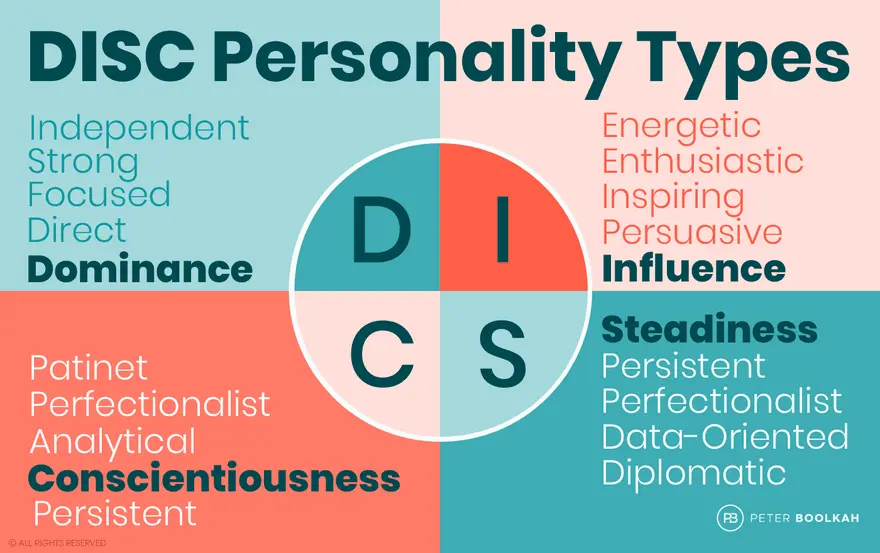DISC Behavioral Science and Its Application in Businesses
- partedu

- Jul 21
- 4 min read

Behavior refers to the set of observable actions and reactions of an individual in different situations and conditions. Behavioral analysis with a business-oriented approach has been considered in developed countries and communities for decades. Today, understanding the behavior of employees, customers, and even managers—and managing interactions with them—is more essential than ever for the growth and advancement of a business.
One of the influential topics in marketing is creating a customer persona. A persona creates a general picture of each customer or the ideal customers for a business. In fact, when a customer approaches a business, the marketing and sales team tries to collect and record information from them. For example, such information may include name, surname, occupation, education, interests, personality traits, and so on.
The marketing and sales team uses the persona to deliver their advertising message, product, and services to the target customer. If you know the customer’s level of education, character, and social status, you can design your advertising message more easily to reach the target audience.
It may be necessary to design several advertising messages for a single product or service to reach different types of customers, as everyone selects the needed product or service based on their own language and interests. For instance, an employee working in a government office has different concerns from someone working in a private company. A university-educated individual seeks different products and services than someone without such education. The needs of a driver are different from those of a salesperson.
Therefore, creating a persona not only helps in designing the advertising message, but it also significantly aids in product presentation.
However, in my opinion, one topic that is missing from the persona is customer behavioral analysis. Knowing what behavioral type our customer belongs to helps us change our approach to the customer in a more effective and beneficial way.

The development of behavioral science in its modern and evolved form has a business-oriented background. Behavioral analysis is different from personality analysis, yet these two concepts are often confused and used interchangeably. Personality type refers to the psychological traits of an individual, which are relatively stable. However, behavioral style refers to a set of reactions that an individual consistently and appropriately displays in their environment.
There are two fundamental differences between behavioral analysis and psychology. First, psychologists focus on a person’s personality, which is internal and very complex. But behavioral analysts focus on behavior, which is the outer and observable layer of each individual. The second difference lies in the time it takes for each to create an impact. Psychologists typically need 5 to 7 years to bring about changes in a person's personality, whereas behavioral analysts, by offering proper guidance, can positively influence an individual’s behavioral type in less than 6 months.
One subject that helps us manage behaviors in businesses, families, and society is understanding behavioral analysis based on the global DISC model. DISC-based behavioral analysis is considered one of the most important soft skills or interpersonal skills. Soft skills are regarded as a complement to hard skills. Most people, especially in less developed or developing countries, tend to focus more on learning hard skills. Hard skills can be defined as technical or academic skills. For example, studying in a university program or completing academic education is considered a hard skill. Learning mechanics, wood design, carpentry, or a foreign language are all hard skills.
Some examples of soft or complementary skills include personal branding, creative thinking and innovation, critical thinking, strategic thinking, problem-solving and decision-making skills, behavioral analysis, attitudinal intelligence, and more. The effectiveness and efficiency of hard skills reach their peak when combined with soft skills. Learning hard skills alone is not enough for success, and without using soft skills, achieving success becomes impossible or very difficult.
In 1928, William Marston, in his book "Emotions of Normal People", stated that human behavior can be categorized into four colors or behavioral types, laying the foundation for DISC behavioral analysis. The first DISC behavioral test was developed by Walter Clarke in 1940 based on Marston’s theory. Clarke's initial purpose in designing the test was to assess employees' traits for hiring. Therefore, behavioral science has a managerial and business background.
Two factors influence human behavior: heredity and environment. In other words, part of the behavioral type is shaped genetically and another part is influenced by the environment. The behavioral types of parents greatly impact the behavioral formation of their children.
In DISC behavioral analysis, behavioral types are divided into four models or colors: red, yellow, green, and blue. In fact, DISC analysis explains that regardless of your personality type, you will behave in four observable and measurable ways.
The Red type, referred to as type D in this model, represents traits such as power, influence, and control. The letter D stands for Dominance.Yellow, referred to as type I in the DISC model, represents enthusiasm, excitement, influence, and high extroversion. The letter I stands for Influencer.The Green behavioral type, referred to as type S in DISC, represents traits such as helpfulness, loyalty, sincerity, and steadiness. The letter S stands for Steadiness.The Blue type, referred to as type C in DISC, represents accuracy, organization, responsibility, and information gathering. The letter C stands for Conscientious.
These four letters together form the word “DISC.”




Comments